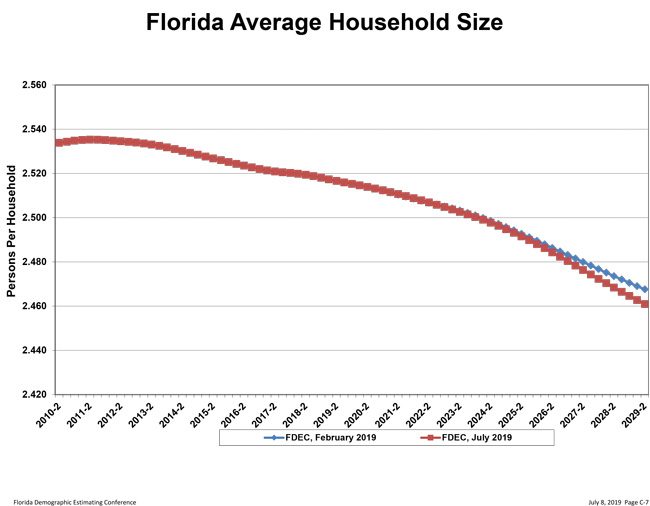
Florida will continue growing by more than 300,000 people a year, and will top 22 million residents in 2022, according to a report posted online this week by state economists.
The Demographic Estimating Conference updated population forecasts through April 1, 2024 and showed steady growth during the multi-year period. “Between April 1, 2018 and April 1, 2024, population growth is expected to average 330,605 net new residents per year (906 per day), representing a compound growth rate of 1.53% over this six-year time horizon,” an executive summary of the report said. “These increases are analogous to adding a city slightly larger than Orlando every year.”
The report estimated the population on April 1, 2018, at 20.84 million, with it increasing to 21.2 million on April 1, 2019. It is forecast to hit 22.2 million as of April 1, 2022 and be at 22.8 million on April 1, 2024. The population increases will primarily stem from “net migration” as people move into the state, rather than births, which are largely offset by deaths.
The Demographic Estimating Conference report doesn’t break down figures by counties. The University of Florida’s Bureau of Economic and Business Research does. The bureau’s June 2019 report is based on different methods of projecting population but sees Florida’s population at 23 million by 2025, closely paralleling the demographic conference’s findings.
In Flagler, the bureau projects a population of 112,000 in 2020, rising to 124,000 in 2025 (meaning that every week, 46 net new residents are living in Flagler), then 134,000 in 2030, and 152,000 by 2040. The figures are significantly lower than those the bureau projected right after the Great Recession.

Starting in 2026, according to state economists, the state is expected to lose population but for migration: based on only births and deaths in the state, there would be a population loss of nearly 3,000 in 2026-27, a loss growing each year by several thousands, to 59,000 by 2038. The loss is expected to be offset by net migration, which would be around the 240,000 to 270,000 mark each year after 2025. The state’s growth rate is expected to slow in coming years, declining below 1 percent starting in 2029. So the state’s resident population will grow at a slower pace than in the previous decade.
The Demographic Estimating Conference also sees continuing declines in the average household size in Florida in coming years. The average size is currently just below 2.52 persons per household. By as early as 2024, that will fall to 2.5, and to 2.46 by the end of the coming decade. That trend will play directly into housing and development development trends–and has already reverberated in Flagler County with such planned developments as The Gardens, off John Anderson Highway, where the developers argue that shrinking household sizes are pushing the housing market toward smaller housing and apartment units.
The state report noted that the state forecasts are lower than population predictions by the U.S. Census Bureau, pointing to different methodologies in the way estimates are reached.
–FlaglerLive and News Service of Florida
![]()
The Florida Demographic Estimating Conference Report, July 2019:
Click to access ConferenceResults-july-2019.pdf




























Leave a Reply